Chinese Sweet Bun Dough
There is one key difference between a Chinese bakery and a more western-styled one. People who go to Chinese bakeries want their items hot - fresh out of the oven hot. The hotter the fresher. It's an actual selling point. In Hong Kong, when a bakery (usually the older and more traditional styled ones) has a new batch of breads that have just come out of the oven, the store owner actually comes out onto the street and announces that to the public. Sure enough, people come flocking in.
Hong Kong bakery line

The time when breads have just come out of the oven is crucial for Chinese bakeries as that is really when they sell a majority of their product.
One of the most common foundational doughs in Chinese bakeries is something called a sweet bun dough. It bakes up sweet, pillowy soft, and is always fortified with milk powder to make it richer and more tender. It's the base bread in buns like the pineapple bun and the cocktail bun. You go into any Chinese bakery and you will see the dough in combination with a ton of other fillings and toppings. The combinations are really endless. It's this reason I wanted to debut this dough before showing a couple more recipes using this base recipe.
Hong Kong bakery buns

A couple ingredients people might not be familiar with are milk powder and bread improver. Milk powder is actually very commonly used in desserts and is essential in this recipe. You can find it in the baking aisle of any supermarket. The second one, which is harder to find, is the bread improver or dough conditioner. It's actually just additives to the dough to make it rise faster, develop better flavor, hold in more air, and produce softer bread. Sounds kind of funky I know. I initially did the recipe without the bread improver, and it turned out fine, though the bread does dry out quickly. The bread improver definitely helped in producing a softer bread, so if you can find it, I'd say experiment with it.
Milk Powder
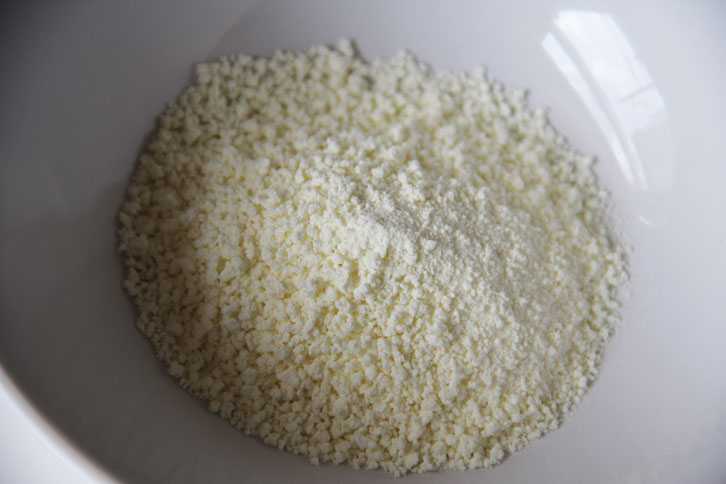
The only tip I will give about this basic dough is you need to knead the dough long enough - until it becomes stretchy and eleastic. People who are new to working with yeasted doughs think that as soon as the dough comes together, you're all set. It's that 10-15 minutes of kneading by machine (45 minutes by hand) that develops the gluten, which will be what holds in all the air created by the yeast. Don't hurry this process. Knead your dough and let it rest for the proper amount of time as the fermentation also gives this sweet bread dough its flavor.
Directions
1. Using the dough hook attachment, add dry ingredients into mixing bowl.

2. On low speed, add eggs and water until you get a rough dough ball.
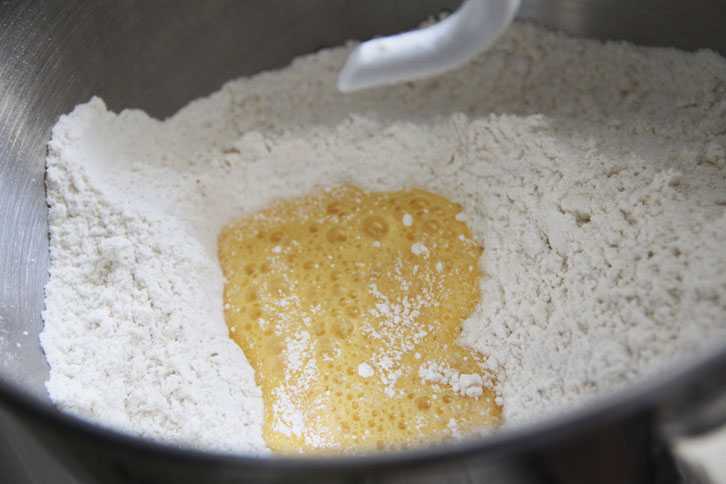
Rough dough ball
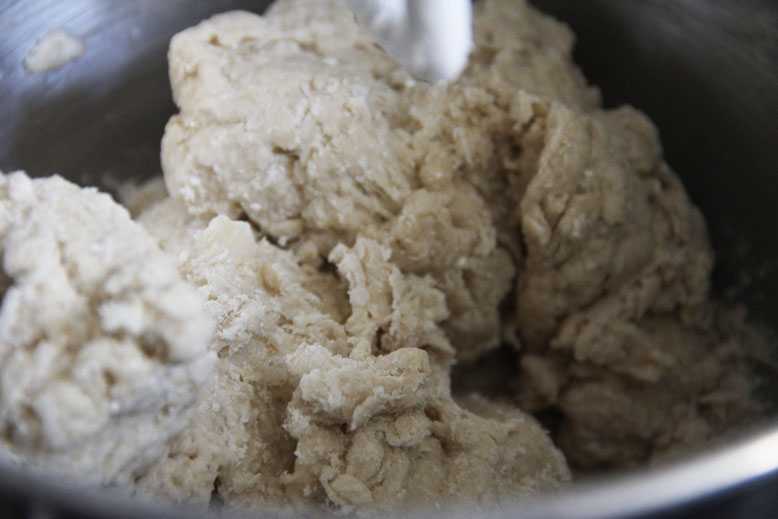
3. On medium speed, add in butter a little at a time.
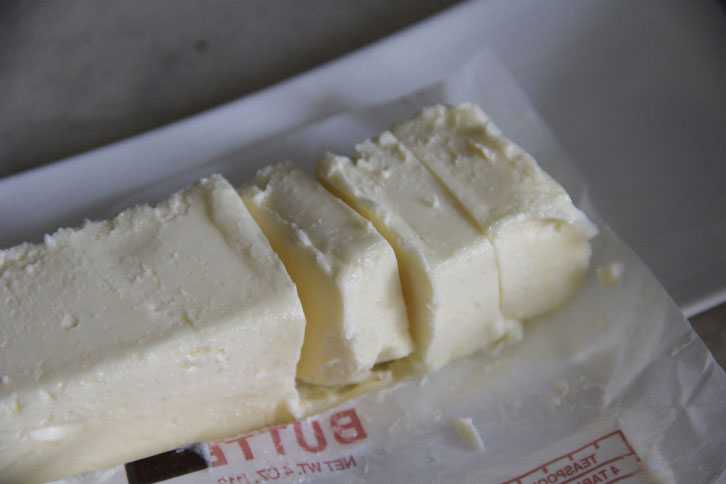
Dough after butter is beaten in. (Should not yet be elastic)

4. Put machine on high speed for 10-12 minutes. Dough should be stretchable and elastic after.
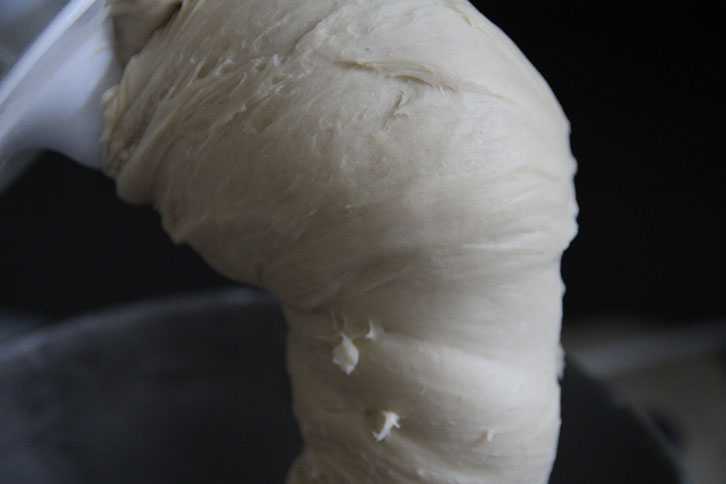
Dough should stretch like so.
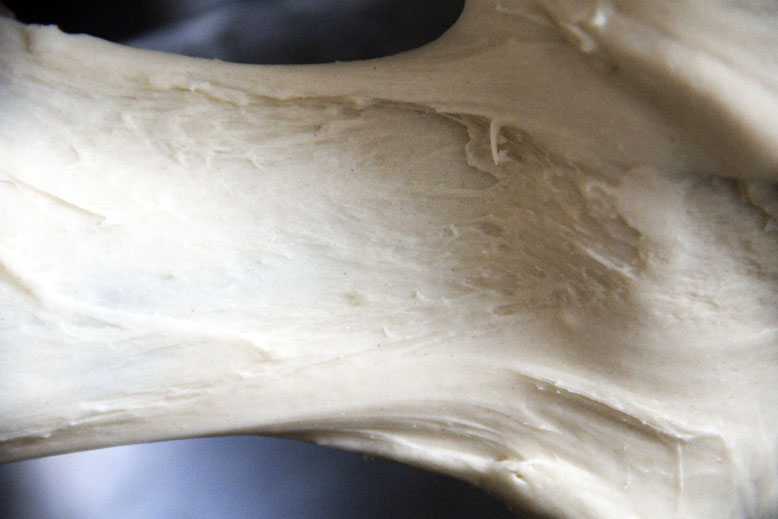
5. Take dough out of bowl and knead by hand for 2-3 minutes.
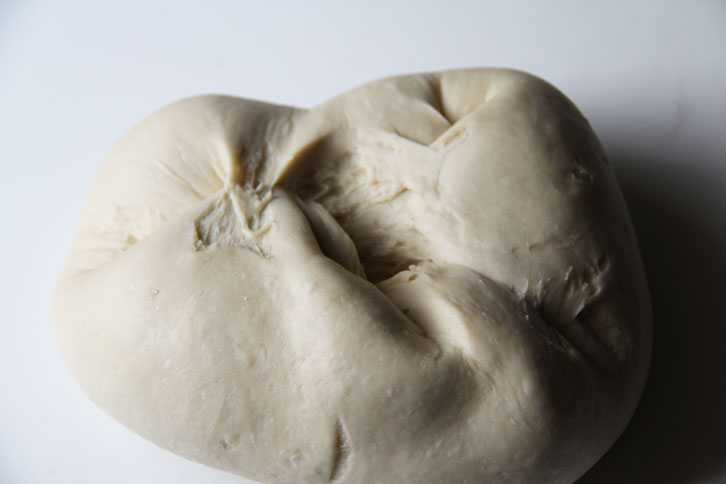
6. Put into glass bowl with plastic wrap to proof for 45 minutes in a warm and dark area.
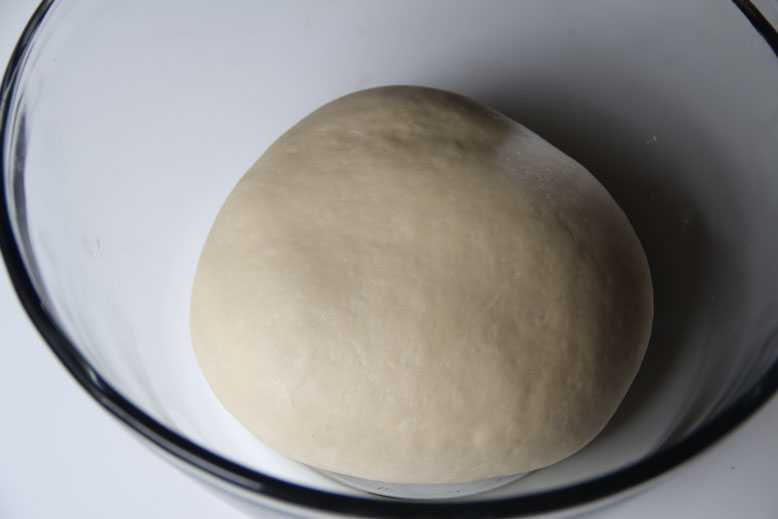
After 45 minutes
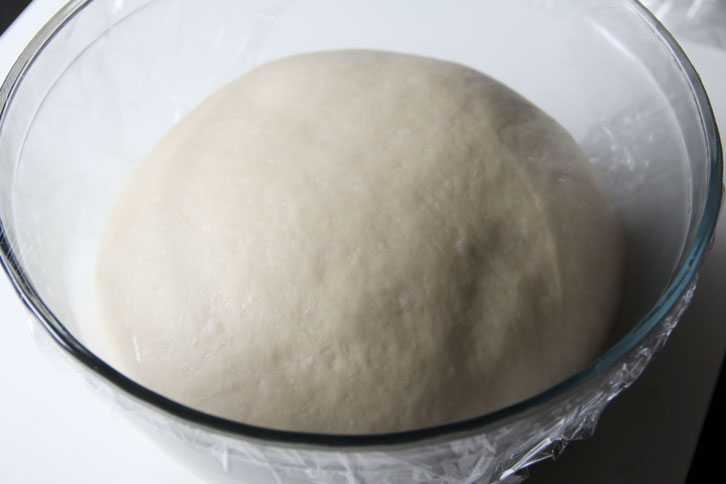
7. Punch down dough to release gases and redistribute the yeast.
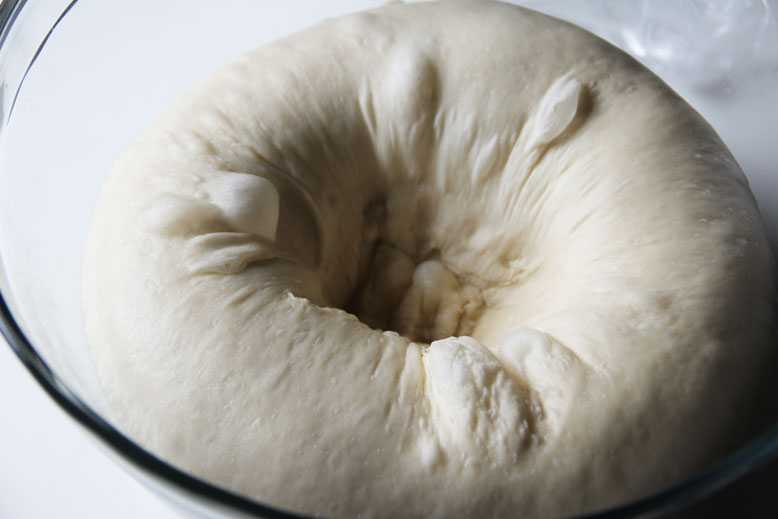
8. Divide dough into 16 balls and let rest for an additional 15 minutes. Dough can either be baked as such at 375 degrees Fahrenheit for 12-14 minutes or filled with a filling.
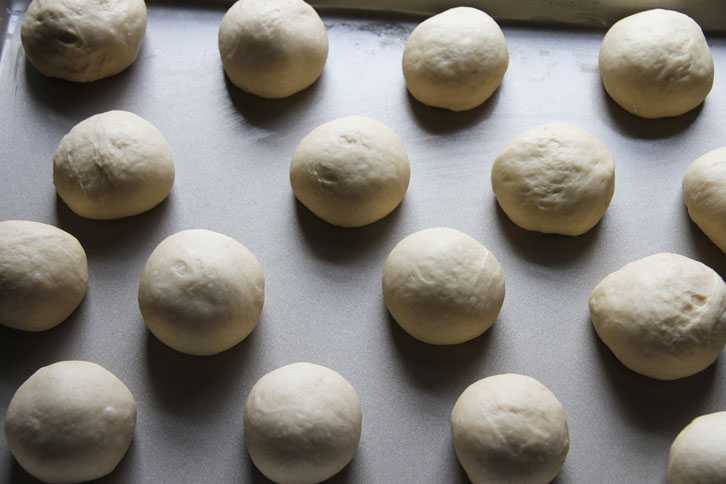
Ingredients - 8 cups all purpose Flour - 1 cup + 2 tbsp granulated sugar - 3 eggs - 7 tbsp butter - 8 tbsp milk powder - 2 tsp salt - 6 1/2 tsp yeast - 1 3/4 cup water - 2 tbsp bread improver